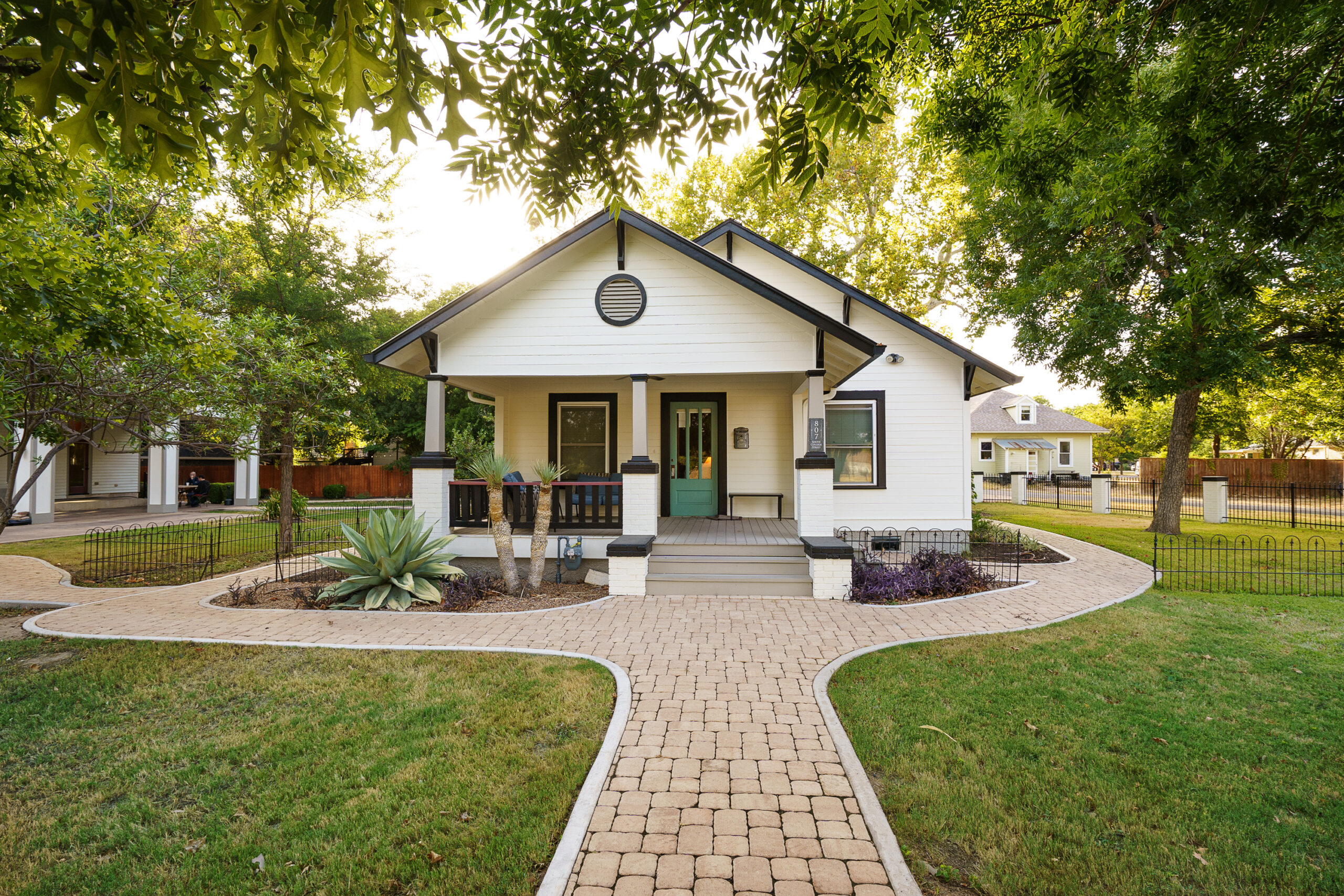
A Fresh Look at Schizophrenia Treatment Facilities
When the journey towards healing begins, finding the right schizophrenia treatment facilities becomes paramount. At the heart of our mission, we stand as a sanctuary for individuals battling not only schizophrenia but also bipolar disorder, addiction, and schizoaffective disorder. Nestled in the serene outskirts of Georgetown, Texas, our approach is rooted in offering long-term mental health treatment programs that cater to both men and women.
Our ethos is centered on diving deep into the underlying causes of mental conditions, treating the person as a whole, and paving the path for successful societal integration. It’s not just about managing symptoms but fundamentally understanding and addressing the root causes that contribute to mental health challenges.
Personalized Care Approach
Why One-Size-Fits-All Doesn’t Work
Every individual’s experience with mental illness is unique, which is why a one-size-fits-all approach falls short. Our schizophrenia treatment facilities are designed to provide personalized care and support, ensuring that each client receives a plan tailored to their specific needs. This bespoke approach increases the likelihood of long-term health and sobriety.
Creating a Tailored Treatment Plan
Upon arrival, every client undergoes a comprehensive assessment, allowing our team to devise a treatment plan that addresses not only their symptoms but their overall well-being. This plan includes a blend of cognitive behavioral therapy, nutrition planning, medication management, and recreational therapy, among other services. It’s a holistic strategy aimed at achieving sustainable lifestyle changes.
A Healing Environment
The ambiance of our facilities plays a crucial role in recovery. We strive to create a serene, therapeutic setting that supports residents on their journey to wellness. From the tranquil landscapes surrounding our campuses to the comfortable and secure living spaces, everything is designed with healing in mind.
Comprehensive Support Services
Support does not end with therapy and medication in our schizophrenia treatment facilities. We understand the importance of community integration, vocational services, and family therapy. These elements are essential for rebuilding lives and restoring hope.
Our dedicated team works closely with residents to develop independent living skills, ensuring they’re prepared for life beyond our campuses. We also prioritize the role of family and community support, facilitating therapy sessions that help redefine family roles and improve communication.
Innovative Therapies and Programs
Cognitive Enhancement Therapy
Recognizing the impact of mental illness on cognitive functions, we incorporate cognitive enhancement therapy into our treatment regimens. This innovative approach, supported by the latest research, shows promise in not only halting cognitive decline but in some cases, reversing it. Especially beneficial for those in the early stages of their illness, it represents hope for regeneration and improvement.
Dual Diagnosis Treatment
It’s not uncommon for individuals with schizophrenia to face concurrent challenges such as addiction. Our dual diagnosis treatment program addresses these complexities, offering specialized psychiatric care alongside therapies focused on preventing relapse and maintaining sobriety.
The Lasting Impact of Comprehensive Care
The journey through mental illness to recovery can be fraught with challenges, but with the right support, transformation is possible. Our schizophrenia treatment facilities are more than just a place to stay; they are communities where long-term recovery is nurtured, and independence is encouraged. Our ultimate goal is to empower our residents to take control of their mental health and lead fulfilling lives.
Success stories abound, with individuals who once faced the profound challenges of schizophrenia and related disorders now living productive, stable lives. These stories are a testament to the effectiveness of comprehensive, personalized care and the resilience of the human spirit.
Getting Started on the Path to Recovery
Deciding to seek help is the first step towards recovery. For those considering our schizophrenia treatment facilities, our admissions team is ready to guide you through the process. Understanding each person’s unique circumstances allows us to provide the support needed to begin the healing journey.
Contacting our team can open the door to a new beginning. Whether it’s for yourself or a loved one, taking that first step can lead to transformative changes and a future filled with hope.
Our Commitment to Excellence
At the core of our mission is a commitment to providing the highest quality care. Our team of professionals is dedicated to supporting each resident’s journey towards mental health and wellness. With a comprehensive array of treatment options, a healing environment, and a personalized approach to care, we offer a beacon of hope for those navigating the challenges of severe mental illness.
Our dedication to excellence is reflected in every aspect of our programming, from the initial assessment to ongoing support and community integration. We are here to provide the tools, resources, and support needed for each individual to achieve long-term recovery and wellness.

Where can someone with schizophrenia live?
Individuals with schizophrenia have various living options available to them, depending on the severity of their condition and their independence level. At Alta Loma, we believe in providing a structured environment that caters to the unique needs of our residents. Our facilities offer long-term mental health treatment programs designed to help individuals find emotional and psychological stability. This approach aims to treat the person as a whole and assist them in integrating successfully into society. For some, this might mean living in a supportive living environment initially, which provides a balance of independence and support. Over time, as individuals gain more skills and confidence, they may transition to more independent living situations, always with the necessary supports in place to ensure ongoing wellness and recovery.
Have you considered what type of living situation might best support your recovery journey? Feel free to share your thoughts or ask more questions.
Where is the best treatment for schizophrenia?
The “best” treatment for schizophrenia is highly individualized, depending on the specific needs and circumstances of the person affected. However, at Alta Loma, we pride ourselves on offering some of the most comprehensive and personalized care in the field. Located in Georgetown, Texas, our serene and therapeutic environment is designed to support residents on their path to wellness. Our treatment programs are rooted in understanding and addressing the root causes of mental health challenges, rather than just managing symptoms. With a focus on cognitive behavioral therapy, nutrition planning, medication management, and more, we offer a holistic approach to treatment that prioritizes long-term health and sobriety.
Could this holistic approach be what you’re looking for in your or your loved one’s treatment plan?
What organizations can help with schizophrenia?
Several organizations are dedicated to helping individuals with schizophrenia and their families. Along with specialized treatment facilities like Alta Loma, organizations such as the National Alliance on Mental Illness (NAMI), the Schizophrenia and Related Disorders Alliance of America (SARDAA), and the World Health Organization provide valuable resources, support, and advocacy. These organizations offer educational materials, support groups, and tools to help navigate the challenges of living with schizophrenia. At Alta Loma, we often work in tandem with these and other organizations to ensure our residents receive the most comprehensive care and support available.
Are you interested in learning more about how these organizations can complement the treatment and support provided at facilities like ours?
What is the best hospital for schizophrenia in the US?
Identifying the “best” hospital or treatment facility for schizophrenia in the US can be challenging, as the ideal choice varies based on individual needs, treatment approaches, and geographical location. However, Alta Loma is recognized as a leading facility for treating severe mental illnesses, including schizophrenia, bipolar disorder, addiction, and schizoaffective disorder. Our approach, which combines personalized care with a serene healing environment and a comprehensive array of support services, sets us apart. We are located just outside Austin, Texas, and offer long-term treatment options aimed at addressing the root causes of mental health issues and promoting successful societal integration. While we believe in the effectiveness of our programs, the best facility for someone will depend on their specific situation and needs.
Are you searching for a treatment program that feels tailored to your unique journey?
How does personalized care in schizophrenia treatment benefit patients?
Personalized care in schizophrenia treatment, like the approach we take at Alta Loma, can significantly benefit patients. This kind of care means that each patient’s treatment plan is tailored to their specific needs, taking into account their medical history, symptoms, and personal goals. This bespoke approach increases the likelihood of long-term health and sobriety by focusing on the individual’s overall well-being, not just their schizophrenia symptoms. It can lead to more effective management of the condition, fewer side effects from treatment, and a greater sense of control over one’s life. Additionally, personalized care plans can adapt over time as the patient’s needs change, ensuring ongoing support that is as dynamic as the recovery journey itself.
Would you like to explore what a personalized care plan might look like for you or your loved one?
What role does family play in the recovery process?
Family can play a crucial role in the recovery process for individuals with schizophrenia. At Alta Loma, we understand the importance of including family in the treatment and recovery journey. Family therapy and support are integral components of our programs, helping to redefine family roles and improve communication. By involving family members, we can create a stronger support network around our residents, facilitating healing not just for the individual but for the family as a whole. This collaborative approach helps ensure that everyone is working together towards the same goal: the long-term recovery and well-being of their loved one.
Has your family been involved in your treatment journey, and how do you think this has impacted your recovery?






